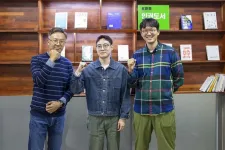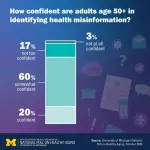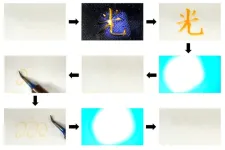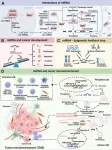(Press-News.org) A joint research team, led by Dr. Sang Yong Park from the National Climate Technology Center at the Korea Institute of Energy Research (KIER) and Professor Dong Gu Choi from the Department of Industrial and Management Engineering at POSTECH, has developed an energy system model optimized for Korea's environment and proposed an optimal strategy for utilizing hydrogen energy.
Hydrogen is being highlighted as a key resource for achieving the government's "2050 Carbon Neutrality Scenario." It is not only a clean energy source in itself but can also be produced using surplus power from renewable energy and converted back into electricity when needed, making it highly suitable for managing variability and operating the power grid.
However, until now, there have been few studies that quantitatively and in-depth analyze the role of hydrogen energy at a national energy system level. Research that takes into account Korea’s specific energy environment is especially lacking, highlighting the need for a scientific approach to support national policy.
The research team successfully developed the KIER-TIMES model, which reflects Korea’s energy environment, based on TIMES (The Integrated MARKAL-EFOM System), an energy system analysis model by the International Energy Agency (IEA). Using this model, they predicted the optimal proportion of hydrogen energy needed to achieve national carbon neutrality by 2050.
* TIMES Model: A type of optimization model that identifies the cost-minimizing combination of energy technologies to meet the final energy demand of a country or region's energy system. It can analyze how changes in costs and efficiencies of various energy technologies impact the overall energy system costs and CO₂ emissions. As a result, it is widely used for assessing the economic and environmental impacts of energy and climate change policies.
The KIER-TIMES model incorporates Korea’s current energy supply and demand, future energy needs, power supply plans, and energy prices. It specifically includes various assumptions, such as the final energy demand for 2050, as outlined in the government’s "2050 Carbon Neutrality Scenario Final Plan" (hereafter referred to as the "Scenario"), to ensure consistency with government policies. Additionally, sensitivity analysis was conducted to assess how changes in these assumptions affect the outcomes, thereby enhancing the model's reliability and applicability even when government policy conditions change.
*2050 Carbon Neutrality Scenario Final Plan (October 18, 2021, Carbon Neutrality and Green Growth Commission): This plan envisions the future state and sectoral transitions needed to achieve carbon neutrality by 2050, presenting two scenarios where the country's net carbon emissions reach zero. The scenarios are differentiated based on whether coal-fired power generation is completely phased out or partially maintained: Plan A (complete phase-out) and Plan B (partial retention).
The findings from the model analysis indicated that in order to reach carbon neutrality at the national level by 2050, hydrogen energy needs to account for 27% of the overall energy supply. Furthermore, forecasts suggest that hydrogen energy's contribution to overall energy use is expected to rise to 25%.
In addition, the research team used the developed model to conduct an in-depth analysis of the proposed import share of hydrogen, improvements in water electrolysis technology efficiency, and the use of carbon capture technologies as outlined in the scenario.
The scenario sets the import share of hydrogen between 80% and 82%, considering the potential of domestic renewable energy. However, the research team's analysis indicates that at least 76% of hydrogen must be imported to achieve carbon neutrality, and a higher import share would increase the likelihood of achieving this goal.
The team also analyzed the reduction in power consumption achievable through improvements in water electrolysis technology efficiency. The national research and development target for water electrolysis efficiency is set at 94%. If this target is achieved, it is expected to reduce the country’s total power consumption by 6.4% and hydrogen consumption by 10.3%.
The research team also proposed a strategy for the use of carbon capture, utilization, and storage (CCUS) technology. Their analysis suggests that CCUS is more effective when applied to blue hydrogen* production facilities rather than being installed at natural gas power plants. Increasing the production of blue hydrogen can help reduce the reliance on green hydrogen**, which has higher production costs, making it a more cost-effective option.
* Blue Hydrogen: Hydrogen produced from fossil fuels such as natural gas, similar to gray hydrogen, but with a key difference: the carbon dioxide (CO₂) generated during the process is captured and stored rather than being released into the atmosphere, significantly reducing emissions.
** Green Hydrogen: Hydrogen produced by using electricity from renewable energy sources to split water through electrolysis, resulting in hydrogen production without any carbon dioxide emissions.
Dr. Sang Yong Park Park, who led the joint research, stated, “This study is significant as it derives the role and optimal utilization strategy for hydrogen energy, taking into account Korea’s energy environment, using a methodology that aligns with international standards.” He further added, “We plan to expand the KIER-TIMES model to analyze the contributions of sector coupling technologies to carbon neutrality and to conduct research on their deployment and dissemination.”
Meanwhile, this research was conducted as part of the Sector Coupling & Integration (SCI) Convergence Research Group project, which was launched in July 2023 by the National Research Council of Science & Technology. The research findings were published on September 30th in Energy, a renowned international journal in the field of energy.
END
Korean research team proposes optimal utilization strategy for hydrogen energy, the key to carbon neutrality
Using a proprietary energy system analysis model, researchers have analyzed the role of hydrogen energy in achieving carbon neutrality.
2024-10-16
ELSE PRESS RELEASES FROM THIS DATE:
NFL Player Ambassadors urge fans to learn lifesaving CPR in 90 seconds
2024-10-16
DALLAS, October 16, 2024 — More than half of all people who experiencing sudden cardiac arrest outside of hospital don’t receive immediate cardiopulmonary resuscitation (CPR). As a result, 9 out of 10 times they die[1]. Yet it takes just 90 seconds to learn the fundamentals of Hands-Only CPR to save a life. CPR, especially if performed immediately, can double or triple a person’s chance of survival. To save more lives, the American Heart Association and the National Football League (NFL) are actively putting boots on the ground - cleats on the field - to educate ...
Most older adults don’t trust AI-generated health information — but many aren’t sure what to trust
2024-10-16
While the vast majority of people over 50 look for health information on the internet, a new poll shows 74% would have very little or no trust in such information if it were generated by artificial intelligence.
Meanwhile, 20% of older adults have little or no confidence that they could spot misinformation about a health topic if they came across it.
That percentage was even higher among older adults who say their mental health, physical health or memory is fair or poor, and among those who report having a disability that limits their activities. In other words, those who might ...
Invention quickly detects earliest sign of heart attack
2024-10-16
With heart attacks, every second counts. A new blood test diagnoses them in minutes rather than hours and could be adapted as a tool for first responders and people at home.
“Heart attacks require immediate medical intervention in order to improve patient outcomes, but while early diagnosis is critical, it can also be very challenging—and near impossible outside of a clinical setting,” said lead author Peng Zheng, an assistant research scientist at Johns Hopkins University. “We were able to invent a new technology that can quickly and accurately establish if someone is having a heart attack.”
The proof-of-concept work, which can be modified to detect infectious ...
New research confirms that young adults can also have large vessel occlusion strokes thought to happen in older adults, given the rise of stroke risk factors in younger adults
2024-10-16
New research published in the Journal of Stroke and Cerebrovascular Diseases confirms that strokes thought to happen in older adults are possible in the younger (defined as 18-50 years old) population. Large Vessel Occlusion Acute ischemic Strokes (LVO-AIS) are considered to be the most debilitating strokes which occur due to blockage of large cerebral arteries usually from blood clots or plaque build up. LVO-AIS is typically thought to occur in older adults given that older individuals are known to have risk factors for large vessel occlusions. However, new research confirms that the younger population can have risk factors ...
Grasslands live in the climate change fast lane
2024-10-16
Although all ecosystems are affected by a changing climate, the impacts can take a while to appear. Changes in forest biodiversity, for example, are known to lag behind changes in a habitat's temperature and precipitation.
Grasslands, on the other hand, are responding to climate change almost in real time, according to new research by the University of Michigan. Put another way, forests accumulate climate debt while grasslands are paying as they go, said the study's lead authors, Kai Zhu and Yiluan Song.
"Climate change does have consequences for our ecosystems. It's going to come sooner or later," said Song, a postdoctoral fellow at the ...
Mount Sinai Doctors to present at ID Week 2024
2024-10-16
Experts in infection prevention and control at the Mount Sinai Health will present new research and insights at ID Week, the joint annual meeting of the Infectious Diseases Society of America, the Society for Healthcare Epidemiology of America, the HIV Medicine Association, the Pediatric Infectious Diseases Society, and the Society of Infectious Diseases Pharmacists in Los Angeles from October 16-19.
Mount Sinai doctors and researchers are also available for comment on breaking health news including the flu, COVID variants, HIV/AIDS, mpox, West Nile virus, measles, and fall vaccinations.
PRESENTATIONS and POSTER SESSIONS
*All abstracts and presentations ...
Rewriting the future: New molecules reversibly change with light and heat
2024-10-16
In this age of cloud storage, few people are backing up data on CD-RWs. The technology to rewrite data on compact discs was made possible by phase-change materials altered by the light and heat of lasers, though this had a limit of 1,000 rewrites. Today, scientists investigating photoswitching molecules, which change their properties when irradiated, have been finding possible applications for these materials, ranging from photopharmacology to data storage.
Osaka Metropolitan University Graduate School of Engineering student Shota Hamatani, Dr. Daichi Kitagawa, a lecturer, and Professor Seiya Kobatake synthesized aza-diarylethenes, which have nitrogen in place of carbon in a molecular structure ...
New breakthrough in quantum computing development, hybrid quantum error correction technology
2024-10-16
A major challenge in realizing quantum computers is the development of 'quantum error correction' technology. This technology offers a solution for addressing errors that occur in the qubit, the basic unit of quantum computation, and prevents them from being amplified during the computation. Without quantum error correction, it would be impossible for quantum computers to outperform classical counterparts, and thus efforts to advance this technology are ongoing worldwide.
Dr. Seung-Woo Lee's research team at the Korea ...
Unlocking the future: Information processing at the speed of light
2024-10-16
The integration of photonics into quantum computing has profound implications across various domains. As the demand for faster and more secure computational capabilities intensifies, photonic quantum computing emerges as a pivotal force, with the photonics market projected to reach USD 837.8 billion by 2025.
Harnessing the unique properties of light, photonic quantum computing revolutionizes data processing by encoding information in photons, offering unprecedented speed and efficiency for solving complex problems that traditional methods struggle to address. Photonic quantum computers can ...
A new chapter in cancer treatment: Innovative strategies and technologies of miRNA
2024-10-16
This study is led by Dr. Shiwei Duan (Department of Clinical Medicine, School of Medicine, Hangzhou City University, Hangzhou, Zhejiang, China). His team analyzed literature on miRNA, summarizing the close relationship between these small molecules and cancer. miRNA is a type of non-coding RNA that does not encode proteins, but can target more than 60% of human protein-coding genes. They play crucial roles in cell growth, differentiation, development, and apoptosis, and their dysfunction is closely linked to numerous diseases. Almost all known cancer cells have the ability to control gene expression using miRNAs, making the impact of miRNAs particularly significant ...
LAST 30 PRESS RELEASES:
Exposure to natural light improves metabolic health
As we age, immune cells protect the spinal cord
New expert guidance urges caution before surgery for patients with treatment-resistant constipation
Solar hydrogen can now be produced efficiently without the scarce metal platinum
Sleeping in on weekends may help boost teens’ mental health
Study: Teens use cellphones for an hour a day at school
After more than two years of war, Palestinian children are hungry, denied education and “like the living dead”
The untold story of life with Prader-Willi syndrome - according to the siblings who live it
How the parasite that ‘gave up sex’ found more hosts – and why its victory won’t last
When is it time to jump? The boiling frog problem of AI use in physics education
Twitter data reveals partisan divide in understanding why pollen season's getting worse
AI is quick but risky for updating old software
Revolutionizing biosecurity: new multi-omics framework to transform invasive species management
From ancient herb to modern medicine: new review unveils the multi-targeted healing potential of Borago officinalis
Building a global scientific community: Biological Diversity Journal announces dual recruitment of Editorial Board and Youth Editorial Board members
Microbes that break down antibiotics help protect ecosystems under drug pollution
Smart biochar that remembers pollutants offers a new way to clean water and recycle biomass
Rice genes matter more than domestication in shaping plant microbiomes
Ticking time bomb: Some farmers report as many as 70 tick encounters over a 6-month period
Turning garden and crop waste into plastics
Scientists discover ‘platypus galaxies’ in the early universe
Seeing thyroid cancer in a new light: when AI meets label-free imaging in the operating room
Neutrophil-to-lymphocyte ratio may aid risk stratification in depressive disorder
2026 Seismological Society of America Annual Meeting
AI-powered ECG analysis offers promising path for early detection of chronic obstructive pulmonary disease, says Mount Sinai researchers
GIMM uncovers flaws in lab-grown heart cells and paves the way for improved treatments
Cracking the evolutionary code of sleep
Medications could help the aging brain cope with surgery, memory impairment
Back pain linked to worse sleep years later in men over 65, according to study
CDC urges ‘shared decision-making’ on some childhood vaccines; many unclear about what that means
[Press-News.org] Korean research team proposes optimal utilization strategy for hydrogen energy, the key to carbon neutralityUsing a proprietary energy system analysis model, researchers have analyzed the role of hydrogen energy in achieving carbon neutrality.








